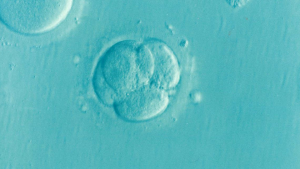Imagine this house party scene: I’m stuck at my best friend’s house for his birthday, and everyone is either passed out or wasted. My best friend comes up to me, insisting that I try fentanyl for the first time.
“Just one pill. It won’t hurt,” he says persuasively, and places the green pill on my palm.
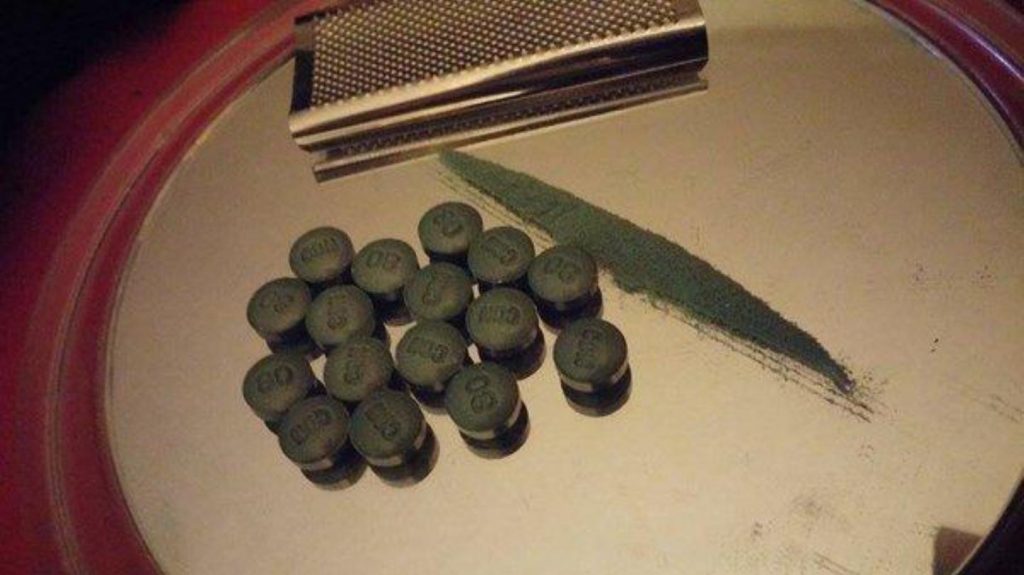
Fentanyl is often crushed into powder using a pedicure file and then snorted for rapid ingestion. Image Credit: CalgaryPolice.ca
Peer pressure gets the best of me, and I reluctantly swallow the green pill. “It can’t be that bad, could it?” I question myself.
As it turns out, swallowing that fentanyl pill was one heck of a big mistake!
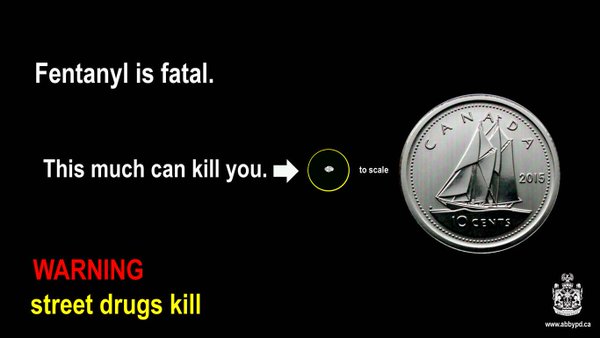
Image illustrating that less than a dime-sized amount of fentanyl can fatally harm a person. Image Credit: abbypd.ca
A single green pill contains merely 50mg of fentanyl, which was more lethal than I thought! A deadly dose of fentanyl is just 2mg, which is equivalent to 2 grains of salt. Fentanyl works by binding to opioid receptors in the brain, which control a person’s breathing rate, emotions, and pain. This produces a state of peaceful happiness for the user, making fentanyl a highly addictive drug. However, fentanyl can stop a person’s breathing as a side effect, which can lead to death. Fentanyl is an opioid drug that is up to 100 times stronger than morphine! The high potency in a small amount of fentanyl misleads users to take a higher dosage, and greatly increases overdose risk.
Recreational drug use is on the rise, and many street drugs are unknowingly laced with fentanyl. Fentanyl’s potency makes it attractive for drug traffickers to smuggle many doses into a small package, but proves to be deadly for users.
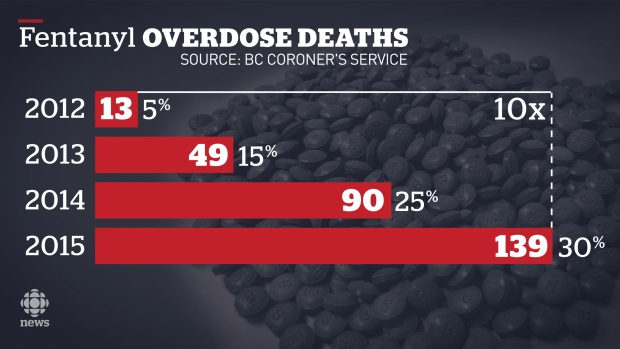
Barcharts illustrating the number of deaths caused by fentanyl overdosage in BC. The number of deaths 2015 was ten times more than the number of deaths in 2012.
Image Credit: cbc.ca
B.C’s drug overdose crisis continues to take a terrible toll, and most are fentanyl-related deaths. Since July 2016, every 4/5 drug testings in Vancouver were positive for fentanyl. Teenagers and young adults aged 16 to 21 are the most vulnerable to drug abuse because of their high tendency for experimentation.
An important tool to help fight against B.C’s fentanyl crisis is the Naloxone kit, which contains medication that reverses the effects of opioid overdose. BC‘s Take Home Naloxone (THN) Program provides training and resources for overdose emergencies. Naloxone is now available to the public without prescription. It is easy to use, has small side effects, and provides a life-saving solution! Increasing access to naloxone is the fastest way to reduce the dramatic number of fentanyl-related deaths.
BC’s Naloxone Program distributes lifesaving kits and trains people to use overdose-reversal medication. This video shows how to recognize and respond to an overdose. Video Credit: towardtheheart.com/
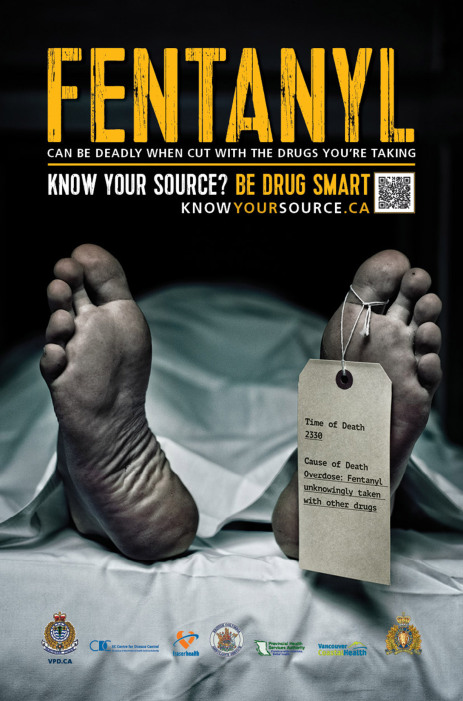
Poster outlining the dangers of drugs cut with fentanyl. Image Credit: knowyoursource.ca
As I mentioned before, fentanyl binds to opioid receptors, which puts the person in a state of ‘suffocating happiness’. Naloxone works by knocking out fentanyl from opiate receptors in the brain and restores normal breathing rate. Without Naloxone, brain cells die without proper oxygen circulation, and the drug user receives serious brain damage and memory loss.
If you decide to take recreational drugs, be sure to carry a Naloxone kit with you. In addition, don`t be afraid to call 911 if you sense that someone is overdosing. Don’t let either you, or your friend, become another fentanyl victim.
-Anna Tam


